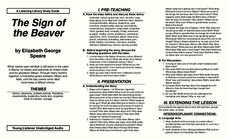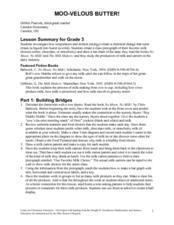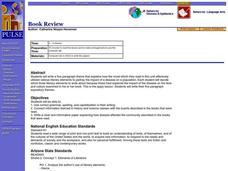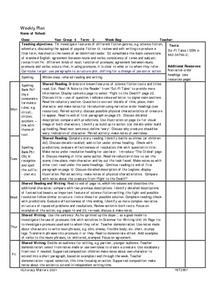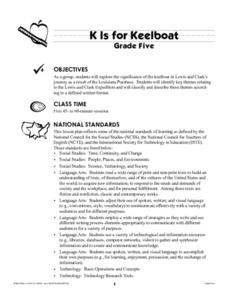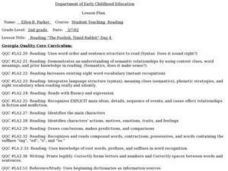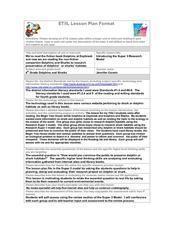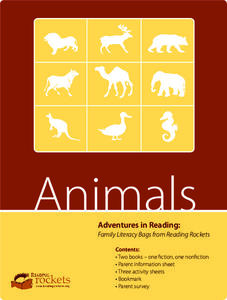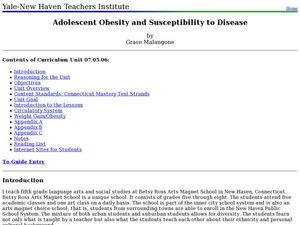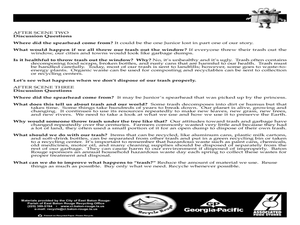Core Knowledge Foundation
Unit 4: The Time Machine by H. G. Wells Teacher Guide
Lead your readers into the fourth dimension as time travelers with a Core Knowledge Language Arts (CKLA) Teacher Guide of H. G. Wells's The Time Machine. The 144-page guide includes a unit calendar, introduction, nine lessons, teacher...
Listening Library
The Sign of the Beaver
Extend a class reading of the novel The Sign of the Beaver across all subject areas with this literature unit guide. From basic discussion questions and writing prompts, to a research project about tracking animals, this...
Curated OER
Our Dinopals with WordArt
Elementary schoolers use the writing process steps to write a descriptive paragraph about a fictional dinosaur. Using a tech tool lesson, they create a graphic title for the paragraph. A nice blending of technology with "old-fashioned"...
Macmillan Education
A Wrinkle in Time Discussion and Activity Guide
As you work through Madeleine L'Engle's A Wrinkle in Time, try out some or all of the 20 questions and activities included here. Useful for discussion questions, group assignments, or individual projects, this resource covers plot as...
Curated OER
Integrating Anime and Manga into an Art of Motion Picture Course
Students examine the art of Anime and note its characteristics. Using scenes, they identify the plots, characters and themes trying to be portrayed. In groups, they compare and contrast the animation in America to that of Anime and...
Curated OER
Men in Black
In this Men in Black worksheet, young scholars answer seven questions about the Men in Black movie relating to UFOs, time capsules, characters, vocabulary, and themes. Students answer questions in short answer format.
Curated OER
Reindeer Research
Young scholars research reindeer habitats and purposes. They investigate the historical significance of reindeer and the Christmas holiday. Finally, they write a short fictional story about reindeer using the information from their...
Curated OER
Rachel's Life is in a Hole
Explore how lack of access to water impacts peoples' lives in poor countries. Through text reading and discussion, middle schoolers are presented with the story of a young girl who lives and functions with limited water resources. They...
Curated OER
Moo-Velous Butter!
Third graders investigate how temperature and motion (energy) create a chemical change that turns cream ( a liquid) into butter (a solid). They create a class pictograph of their favorite mils choices (white, chocolate, or strawberry)...
Brain Targeted Teaching
Tuck Everlasting Novel Study
The broad ideas included here provide clear ideas on how to use brain-targeted learning, what activities work best with Tuck Everlasting, how to apply the knowledge gained from their reading, and ideas for evaluation. Not teaching...
Curated OER
Book Review
Students write a five paragraph theme that explains how the novel which they read in this unit effectively utilized various literary elements to portray the impact of a disease on a population. They then decide which three literary...
Curated OER
SCI-FI TALES
Fifth graders brainstorm known features of science fiction books and titles read. They pair up and discuss the possible physical characteristics fo a creature that could appear fron an excerpt of SCI-FI TALES.
Curated OER
K Is for Keelboat
Fifth graders investigate the significance of the keelboat in the Lewis and Clark expedition. They define the key themes of the expedition and classify them in prescribed format, an ABC book.
National Endowment for the Humanities
Folklore in Zora Neale Hurston's Their Eyes Were Watching God
Learners define folklore, folk groups, tradition, and oral narrative. They identify traditional elements in Their Eyes Were Watching God Analyze and understand the role of traditional folkways and folk speech in the overall literary...
Curated OER
Michael Jackson Lessons: A Cross-Curricular Experience
By learning about Michael Jackson through these lesson plans, students can explore history, science, math, etc . . .
Curated OER
Language Arts: Plotting Stories
Second graders read the story, "The Foolish, Timid Rabbit," as part of a unit on appearances. After reading with partners, they write their own stories that include elements about some forms of matter from their science studies. Students...
Curated OER
Silent Spring
Students read background information about Rachel Carson found on the listed website links. They analyze and answer questions about her work and how it is linked to science then they research pesticide usage and alternative methods.
Curated OER
Introducing the Super 3 Research Model
Fourth graders read the fiction selection, Dolphins at Daybreak, and then the corresponding non-fiction books about dolphins and sharks. They use a specific research model to find information about dolphins and sharks from books and...
Curated OER
Infectious Diseases
Seventh graders create a brochure for a fictional pharmaceutical company.
PBS
Reading Adventure Pack: Animals
Scholars explore the animal kingdom with help from two texts, Blueberries for Sal by Robert McCloskey and A Bed for the Winter by Karen Wallace. The literature and informational text set the learning stage for thoughtful discussion and...
Curated OER
Adolescent Obesity and Susceptibility to Disease
Students understand the importance of maintaining a healthy weight and good health. In this health lesson students read text then create their own pamphlet on the cardiovascular system, weight gain, treatments and health risks.
Curated OER
Fitting Trash into Yesterday: A Fifth Grade Activity
Fifth graders explore the concept of waste management. In this recycling activity, 5th graders discover the history of waste management and discuss how the U.S. should respond to the issue of ever-increasing waste.
Curated OER
Animals, Animals, Everywhere
Fourth graders participate in a variety of activities dealing with animal characteristics and classifications in this multi-task activity. They use graphic organizers, make booklets, and make models.
Curated OER
Comparing or Contrasting Two Books
Students compare two pieces of literature. In this literary comparisons lesson, students read 2 books that they personally select and then compare and contrast the literary elements of each in a comparative essay.

